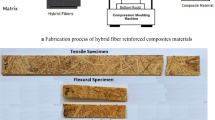Conclusions
-- Analysis of the patent literature has shown that to obtain synthetic strings with playing properties close to those of strings from natural raw material and with a good lifetime, one uses a construction which includes a core and winding of monofilaments or complex yarns and an envelope (coating). To obtain flexible elastic strings, it is preferable to use complex yarns, especially in the core. To wind the core, thin textile monofilaments are recommended most often.
-- One of the basic items is the selection of the starting material for making the component parts of the string. The most widespread materials for the core and winding are polyamide-6 or −66; more rarely, polyethylene terephthalate; for the envelope, a polyurethane or polyamide-6; more rarely, epoxy resins. Yarns for making the core and winding are spun from synthetic polymers, mainly by the extrusion method. Application of the polymeric envelope is also recommended to be done by the extrusion method.
-- To increase resistance to abrasion, methods have been proposed for preparing strings with metallic coatings, with a coating with fluorine-containing resins, with various geometric profiles of the cross section, and the various forms of build-up on the surface.
-- Resistance to the action of UV-rays is increased by introducing into the envelope an antioxidant, carbon-containing organic compounds, and also application of a thin metallic coating on the string; resistance to atmospheric action, by introducing various types of oils and greases.
-- For strength in the string, it is recommended to use high-strength thermoplastic polymers of the aramide type or aromatic ketones.
-- High elastic properties of the strings are achieved by the use of special impregnated cements or binders, or by fibrillated film with various tensions and degrees of stretch, by the use of the process of string setting under tension, or by changing the angle of winding of the core with respect to the string axis.
Similar content being viewed by others
References
West German application 3037457 (1982).
U.S. patent 4449353 (1984).
U.S. patent 4391088 (1980).
West German patent 2804446 (1980).
French patent 2544347 (1984).
Czechoslovakian Inventor's Certificate 226543 (1983).
Polish patent 124012 (1985).
Polish application 105679 (1976).
Polish patent 139615 (1987).
West German application 3701503 (1987).
West German patent 155388 (1982).
Czechoslovakian Inventor's Certificate 257196 (1987).
U.S. patent 4084399 (1978).
U.S. patent 4660364 (1987).
European Patent Office application 0086285 (1983).
West German application 3437578 (1986).
West German application 2731615 (1979).
French patent 2570283 (1986).
U.S. patent 4349198 (1982).
Finnish patent 70146 (1986).
British application 1569530 (1980).
U.S. patent 4005863 (1977).
British patent 1578599 (1977).
West German application 3447608 (1986).
European Patent Office patent 0257424 (1988).
British patent 1531652 (1978).
West German application 3116280 (1982).
British application 2155515 (1985).
U.S. patent 4530206 (1985).
An extrusion assembly for tennis strings, Chemie-fasern/Textilindustrie, Vol. 38/90, No. 3, T28 (1988).
U.S. patent 4275117 (1981).
RST application 81/01797 (1981).
RST application 86/02850 (1986).
West German application 2728339 (1978).
Czechoslovakian Inventor's Certificate 226652 (1983).
Czechoslovakian Inventor's Certificate 206357 (1980).
French patent 2491098 (1982).
U.S. patent 4183200 (1980).
West German patent 2805066 (1978).
Additional information
UKrNIIV, Kiev. Translated from Khimicheskie Volokna, No. 5, pp. 32–38, September–October, 1992.
Rights and permissions
About this article
Cite this article
Rudenko, L.G., Nosov, M.P. & Shokol, F.I. Tennis strings and methods of making them (review). Fibre Chem 24, 380–389 (1993). https://doi.org/10.1007/BF00551586
Issue Date:
DOI: https://doi.org/10.1007/BF00551586




